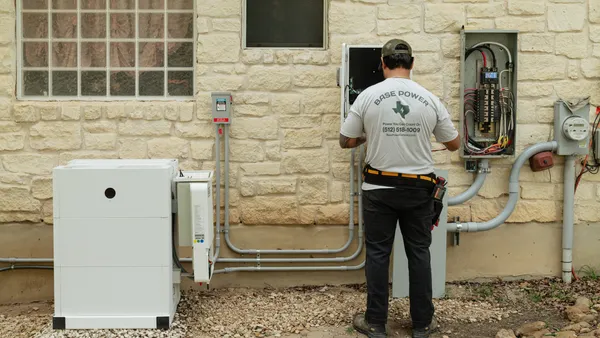Dive Brief:
- With the clock running out on President Obama's administration, the White House is pushing out dozens of new rules that include land management, executive bonuses, private sector pay and energy efficiency.
- According to The Washington Post, the U.S. Department of Energy is finalizing almost a dozen new rules that would impact furnaces, commercial boilers and portable air conditioners.
- Obama in 2013 targeted appliance standards to reduce carbon dioxide emissions by 3 billion metric tons by 2030, and since then the new rules have largely been a bipartisan effort with significant impacts.
Dive Insight:
President-elect Donald Trump has vowed to roll back regulations he believes are stymieing economic growth, and so the White House is trying to win the battle through volume.
The Washington Post reports it can take the Senate up to 10 hours of floor time to reverse a Presidential rule, and insiders expect lawmakers will do just that with about a half dozen of the administration's final rules.
But that would leave many in place, and Obama has indicated his administration will work until the finish line to enact new standards he believes are necessary.
Environmental advocates say the energy efficiency standards now being finalized could yield lifetime savings of 20% of the United States' annual energy consumption.
While Trump has vowed to undo what he believes are onerous regulations, and has specifically targeted the U.S. Environmental Protection Agency, there are also indications he does not intend to oppose expansion of clean energy.
“Energy is not one of the top five agenda items," a Trump transition-team member told Utility Dive following the election. “Everything with renewables continues.”
Efficiency standards for appliances are finalized by the Appliance Standards and Rulemaking Federal Advisory Committee. Congress has set minimum energy conservation standards for consumer products and commercial and industrial equipment for decades; products regulated by the Appliance and Equipment Standards Program represent about 90% of home energy use, 60% of commercial building energy use, and 29% of industrial energy use.
According to the Department of Energy, the standards saved American consumers $55 billion on their utility bills in 2013. And they tend to be a fairly bipartisan issue.
"I think it goes unnoticed sometimes because it is often uncontroversial. There has been longstanding bipartisan support for the efforts, with five pieces of appliance standards legislation passed over 40 years," Marianne DiMascio, who works with the Appliance Standards Awareness Project, told Utility Dive earlier this year.














